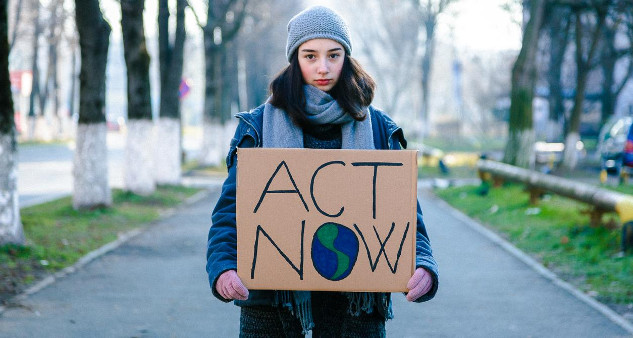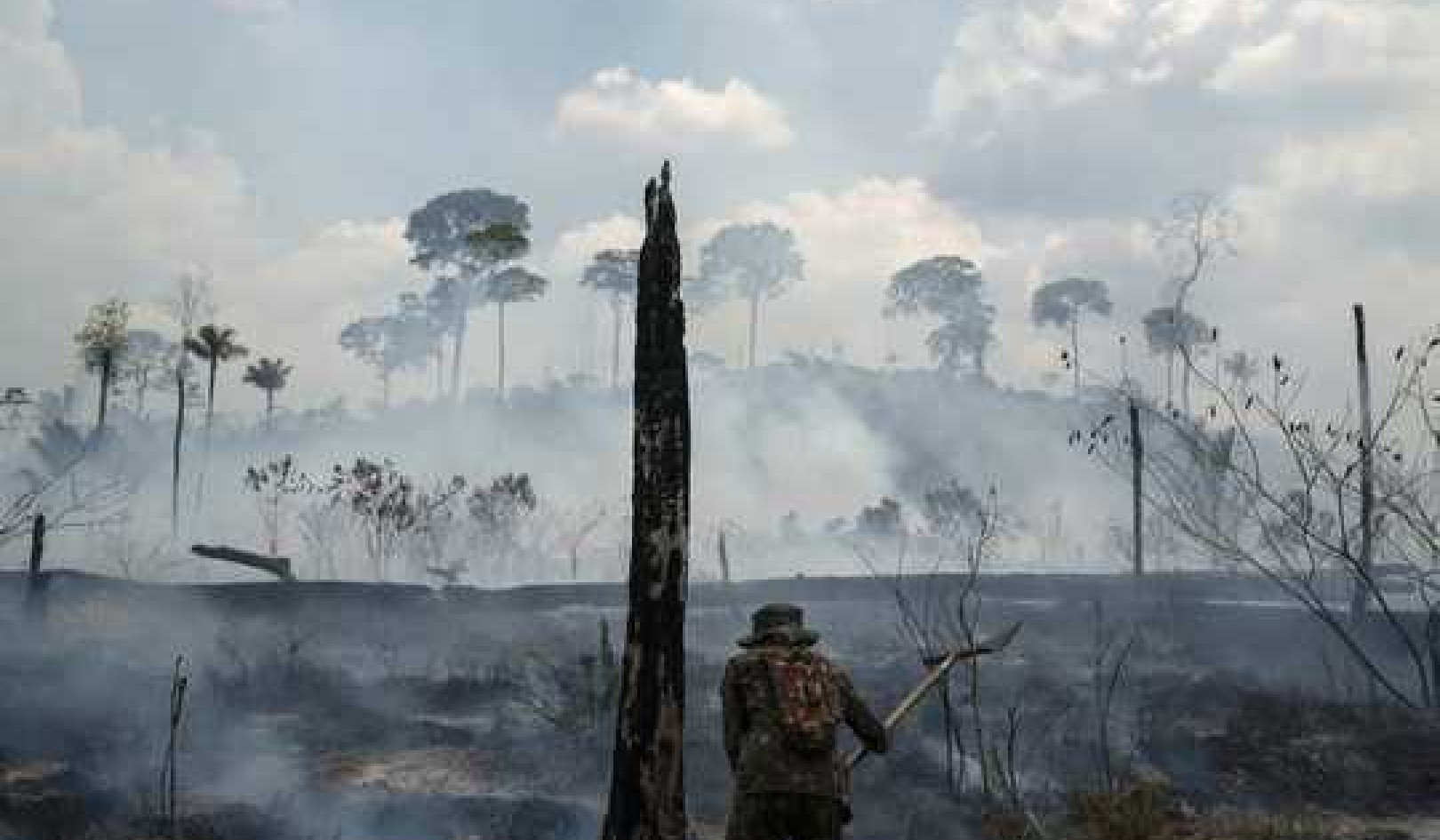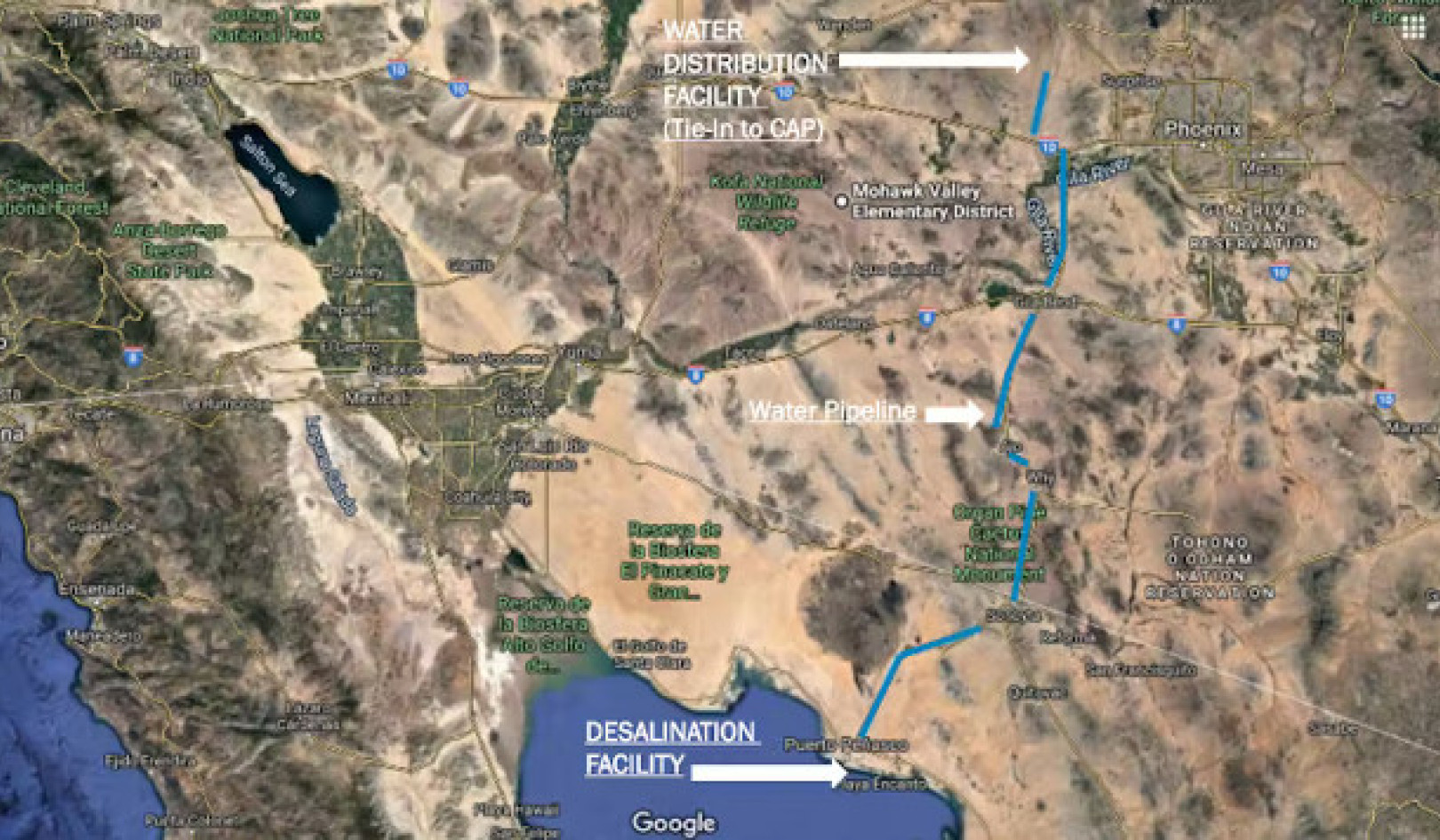
In this Article:
- Recent anomalies in global temperature, and why they are alarming.
- How does the potential release of methane hydrates threaten our climate?
- Why climate models failed to predict these changes, and what it means for the future?
- How climate-driven mobilizations can spur economic growth and lead to lasting benefits.
- How we can remove climate deniers from power to ensure effective climate action.
Uncharted Territory: The Need for a Global Climate Mobilization
by Robert Jennings, InnerSelf.com
As we endure the scorching summer of 2024, it's clear that we've stepped into uncharted and urgent territory. The relentless shattering of average global temperature records, with no sign of respite, has prompted many scientists to sound the alarm. We're facing an unprecedented climate crisis, a reality that even the most sophisticated climate models failed to predict. The future of our planet is precariously balanced on the edge, demanding immediate and collective action.
In the past, we underestimated the danger of our climate future, which scientists carefully drew over decades. These methodical models guided our understanding of how greenhouse gas emissions would drive higher temperatures and trigger various climate impacts. But now, those old models may need to be more reliable. We were told we must stay below 1.5C in global temperature just a few years ago. Yet, we just experienced 13 months of about 1.5C. We're now in a race against time, with the potential for catastrophic tipping points just ahead.
One of the most concerning threats lurking beneath this uncharted territory is the potential release of methane hydrates—an often overlooked but deadly climate risk. As ocean temperatures rise, the stability of these methane reservoirs is called into question, threatening to unleash a potent greenhouse gas that could accelerate global warming to a terrifying degree. If we don't act now, and with the urgency of a WWII-style mobilization, we risk pushing our planet beyond the point of no return.
The Breaking Point of Our Climate System
Just a year ago, scientists began noticing something strange. The average global temperature jumped by around 0.2°C in just a few months—an amount of warming that models predicted would take a decade. This anomaly threw the scientific community into a frenzy, with experts struggling to understand what was happening. It was as if we had leaped forward in time, landing in a climate future we weren't prepared for.
The careful choice of words, "uncharted territory," captures the moment's anxiety. The climate models, our guide for so long, suddenly needed to be revised. The anomaly wasn't just an aberration but a warning sign that the climate system might be more volatile than we ever imagined.
The upcoming La Niña, a cyclical ocean event that typically cools global temperatures, adds to the uncertainty. But if temperatures don't decline as expected during La Niña, it could signal that the climate system has been pushed into a new and dangerous state. We could be approaching a tipping point, where feedback loops like the release of methane from oceanic hydrates could drive the climate into an uncontrollable spiral.
The Need For Continued Model Research
For decades, scientists have relied on climate models, a testament to our deep understanding of the Earth's atmosphere, oceans, and energy balance. These models have evolved into sophisticated tools, enabling us to predict future climate conditions confidently. However, the anomaly observed last year challenges the assumptions that underpin these models. This underscores the crucial need for continued model research as we strive to understand and combat the climate crisis.
One possible explanation for the anomaly is that we've underestimated the climate system's sensitivity to specific triggers. As temperatures rise, the Earth's ability to absorb heat from the sun may change in ways that the models didn't account for. Additionally, feedback mechanisms—like the melting of polar ice, which reduces the Earth's reflectivity—could amplify the warming effect more than expected.
Another possibility is that we've overlooked critical drivers of climate change, such as the release of methane from permafrost and oceanic hydrates. Methane is a greenhouse gas far more potent than CO2, and its release could dramatically impact global temperatures. If this is indeed the case, then we are facing a climate emergency of a scale that few have anticipated.
The Silent Threat Beneath Our Oceans
Beneath the world's oceans, a ticking time bomb lies in wait. Methane hydrates—crystalline structures that trap methane gas under pressure and cold temperatures—are found off the coast of nearly every country. These hydrates are stable only under specific conditions. As ocean temperatures rise, they risk destabilization, potentially releasing vast quantities of methane into the atmosphere.
Methane is a greenhouse gas that is 90 times more potent than CO2 in the short term and 25 times more potent over the long term. A significant release of methane from oceanic hydrates could trigger a feedback loop, where the additional warming caused by methane release leads to further destabilization of hydrates, releasing even more methane. This scenario could push the climate into a runaway state, where warming accelerates uncontrollably, leading to catastrophic consequences such as rapid sea-level rise, extreme weather events, and the collapse of ecosystems.
Already, we've seen an increase in land-based methane emissions, mainly from melting permafrost in the Arctic. There is also growing evidence that methane releases from hydrates may increase. Yet, despite this looming threat, the Intergovernmental Panel on Climate Change (IPCC) has largely ignored the potential for a massive methane release. This oversight could prove catastrophic if we don't address it now.
Ticking Time Bombs
Feedback loops are self-reinforcing processes that can amplify the effects of climate change. One of the most concerning feedbacks is the potential for methane release from hydrates to trigger a runaway warming effect. Once this process begins, it could be nearly impossible to stop.
The IPCC focuses primarily on CO2 emissions, the primary driver of global warming. However, by underestimating the role of methane, the IPCC may need a critical piece of the puzzle. The potential for a sudden and massive release of methane from hydrates represents a tipping point that could accelerate global warming far beyond what current models predict.
If the climate system crosses this tipping point, the consequences could be dire. We could see rapid increases in global temperatures, leading to more extreme weather events, sea-level rise, and the collapse of ecosystems. The urgency of the situation cannot be overstated. We must act now to mitigate these risks before it's too late.
The Urgent Need for a Global Response
In the face of such an existential threat, we must respond with the same urgency and determination that characterized the global mobilization during World War II. The climate crisis is not just an environmental issue; it threatens our survival, and we must treat it as such. Each of us has a role to play in this global response: advocating for policy changes, reducing our carbon footprint, or supporting initiatives that combat climate change.
During WWII, the world came together to fight a common enemy, with governments, industries, and individuals all contributing to the war effort. Today, we need a similar level of mobilization to combat climate change. This includes massive investments in renewable energy, reforestation, and technologies that can remove CO2 and methane from the atmosphere.
We must also transform our economies, shifting away from fossil fuels and toward sustainable practices. This will require bold leadership, innovation, and a willingness to sacrifice for the greater good. But the alternative—continuing on our current path—will lead to an increasingly uninhabitable future for billions of people.
Removing Climate Deniers from Power
One of the biggest obstacles to effective climate action is the presence of climate deniers in positions of power. These individuals, driven by ideology or vested interests, have actively worked to undermine climate science and block meaningful action. They must be removed from office if we are to have any hope of addressing the crisis.
Voter engagement is critical in this effort. The upcoming election cycles in key countries, particularly the United States, will be pivotal. Citizens must be informed and motivated to vote for leaders committed to climate action. This isn't just about partisan politics—it's about survival.
We also need to hold politicians accountable for their actions. Those who deny the reality of climate change or fail to take it seriously should be voted out of office. At the same time, we must support and elevate leaders who understand the situation's urgency and are willing to take bold steps to address it.
Economic Prosperity Through Climate Action
Contrary to the claims of climate deniers, addressing climate change can lead to economic prosperity. A massive investment in green technologies and infrastructure can create jobs, drive innovation, and stabilize global markets. History has shown that crisis-driven mobilizations can spur economic growth and lead to lasting benefits.
During WWII, the United States transformed its economy to support the war effort, creating millions of jobs and laying the foundation for post-war prosperity. A similar transformation is possible today. Investing in renewable energy, energy efficiency, and sustainable practices can create a thriving green economy that benefits everyone.
Moreover, focusing on climate action can lead to more excellent social and economic stability. By reducing our dependence on fossil fuels, we can reduce energy price volatility and lessen the impact of geopolitical conflicts over resources. A stable climate is essential for a stable economy; the sooner we act, the better off we will be.
What We Can Do Now
While large-scale governmental and industrial actions are essential, individual and collective action also plays a crucial role in addressing the climate crisis. Each of us has the power to make a difference; when our efforts are combined, they can significantly impact us.
Reducing your carbon footprint is an excellent place to start. Simple changes like using energy-efficient appliances, reducing car travel, and minimizing waste can add up. Supporting green businesses, choosing sustainable products, and advocating for policies that promote environmental stewardship are also important.
But individual actions alone are not enough. We must also engage in collective action, joining forces with others to amplify our efforts. This can involve participating in local climate initiatives, volunteering for environmental organizations, or simply spreading awareness about the urgency of the crisis.
Political engagement is another critical aspect of collective action. Voting is one of the most potent tools to influence climate policy. By electing leaders who prioritize the environment and holding them accountable, we can drive the systemic changes needed to combat climate change.
Our challenges are immense, and the stakes could not be higher. We are navigating uncharted territory, with the future of our planet and civilization hanging in the balance. But despite the severity of the situation, there is still hope. By acting now—boldly, decisively, and collectively—we can steer our course away from catastrophe.
The path ahead will not be challenging, but it will require changes from all of us. But the alternative—inaction and indifference—is not an option. We must rise to the challenge, as previous generations did in times of crisis, and commit ourselves to building a sustainable, resilient future. The future is still in our hands, but only if we dare to seize it.
Article Recap:
The article examines the critical climate threats from methane hydrates and the current anomalies in global temperature. As these challenges escalate, it emphasizes the need for a WWII-style global climate mobilization to prevent catastrophic tipping points. Immediate and collective action is crucial to mitigate these risks and secure a sustainable future.
Further Reading:
- Defusing the Methane Greenhouse Time Bomb: https://www.scientificamerican.com/article/defusing-the-methane-time-bomb/
-
Methane Matters: https://earthobservatory.nasa.gov/features/MethaneMatters
-
Melting Arctic Ocean Raises Threat of ‘Methane Time Bomb’: https://e360.yale.edu/features/melting_arctic_ocean_raises_threat_of_methane_time_bomb
- Tipping Points: A Brief Review of their Role as Wicked Problems in Climate Change
-
Modeling the fate of methane hydrates under global warming: https://agupubs.onlinelibrary.wiley.com/doi/full/10.1002/2014GB005011
About the Author
 Robert Jennings is co-publisher of InnerSelf.com with his wife Marie T Russell. He attended the University of Florida, Southern Technical Institute, and the University of Central Florida with studies in real estate, urban development, finance, architectural engineering, and elementary education. He was a member of the US Marine Corps and The US Army having commanded a field artillery battery in Germany. He worked in real estate finance, construction and development for 25 years before starting InnerSelf.com in 1996.
Robert Jennings is co-publisher of InnerSelf.com with his wife Marie T Russell. He attended the University of Florida, Southern Technical Institute, and the University of Central Florida with studies in real estate, urban development, finance, architectural engineering, and elementary education. He was a member of the US Marine Corps and The US Army having commanded a field artillery battery in Germany. He worked in real estate finance, construction and development for 25 years before starting InnerSelf.com in 1996.
InnerSelf is dedicated to sharing information that allows people to make educated and insightful choices in their personal life, for the good of the commons, and for the well-being of the planet. InnerSelf Magazine is in its 30+year of publication in either print (1984-1995) or online as InnerSelf.com. Please support our work.
Creative Commons 4.0
This article is licensed under a Creative Commons Attribution-Share Alike 4.0 License. Attribute the author Robert Jennings, InnerSelf.com. Link back to the article This article originally appeared on InnerSelf.com

Related Books:
The Future We Choose: Surviving the Climate Crisis
by Christiana Figueres and Tom Rivett-Carnac
The authors, who played key roles in the Paris Agreement on climate change, offer insights and strategies for addressing the climate crisis, including individual and collective action.
Click for more info or to order
The Uninhabitable Earth: Life After Warming
by David Wallace-Wells
This book explores the potential consequences of unchecked climate change, including mass extinction, food and water scarcity, and political instability.
Click for more info or to order
The Ministry for the Future: A Novel
by Kim Stanley Robinson
This novel imagines a near-future world grappling with the impacts of climate change and offers a vision for how society might transform to address the crisis.
Click for more info or to order
Under a White Sky: The Nature of the Future
by Elizabeth Kolbert
The author explores the human impact on the natural world, including climate change, and the potential for technological solutions to address environmental challenges.
Click for more info or to order
Drawdown: The Most Comprehensive Plan Ever Proposed to Reverse Global Warming
edited by Paul Hawken
This book presents a comprehensive plan for addressing climate change, including solutions from a range of sectors such as energy, agriculture, and transportation.
Click for more info or to order






























